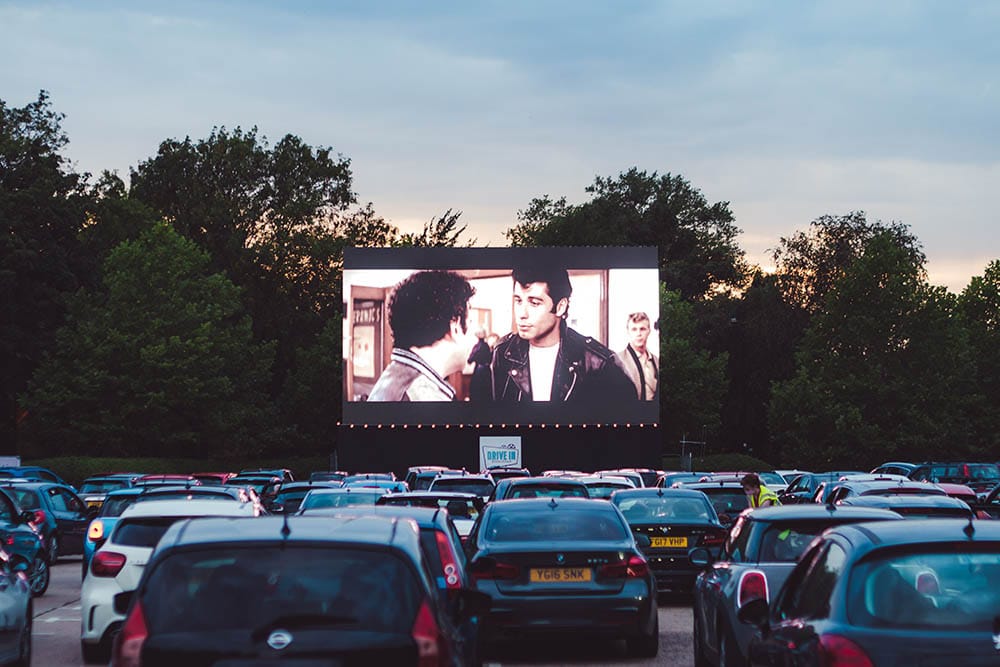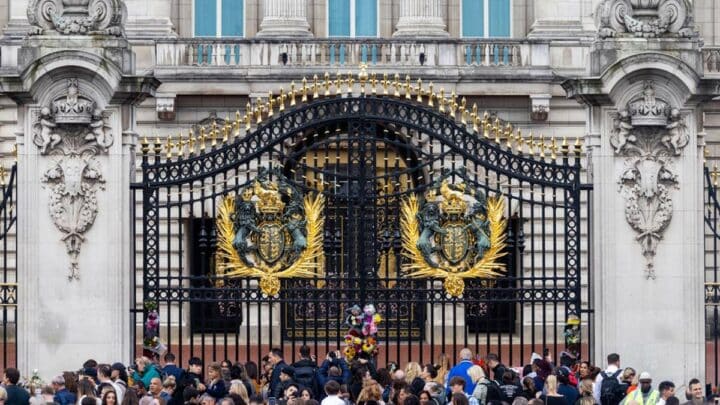
It’s time to delve into the Buckingham Palace Gates – there’s more to them than meets the eye…
We’ve all seen Buckingham Palace, stood outside wondering if the Queen will poke her head out and give us a wave (though those days are now over). Anyway, how close have you actually looked at all the details?
As is pretty much always the case, a closer look reveals some pretty interesting information. Take the palace’s gates for example: they’re loaded with clues to the shifting times in which they were built and nods to historic elements of Britain’s long history.
Here’s a lowdown…
Why Visit Buckingham Palace Gates?
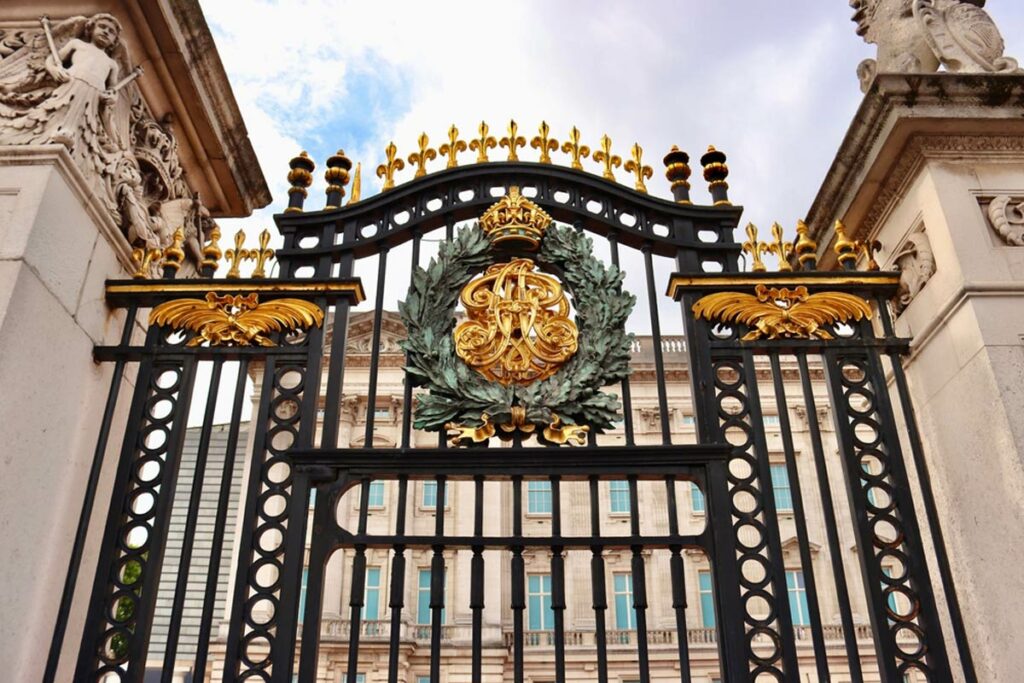
Because you can impress your mates with a niche knowledge? Ok let’s not be that cynical. How about because looking closely at these gates can give you a new perspective on something you probably overlooked previously?
You’ll also be able to take a bit of that knowledge and apply it to other bits of British design you see around London.
The History of The Buckingham Palace Gates
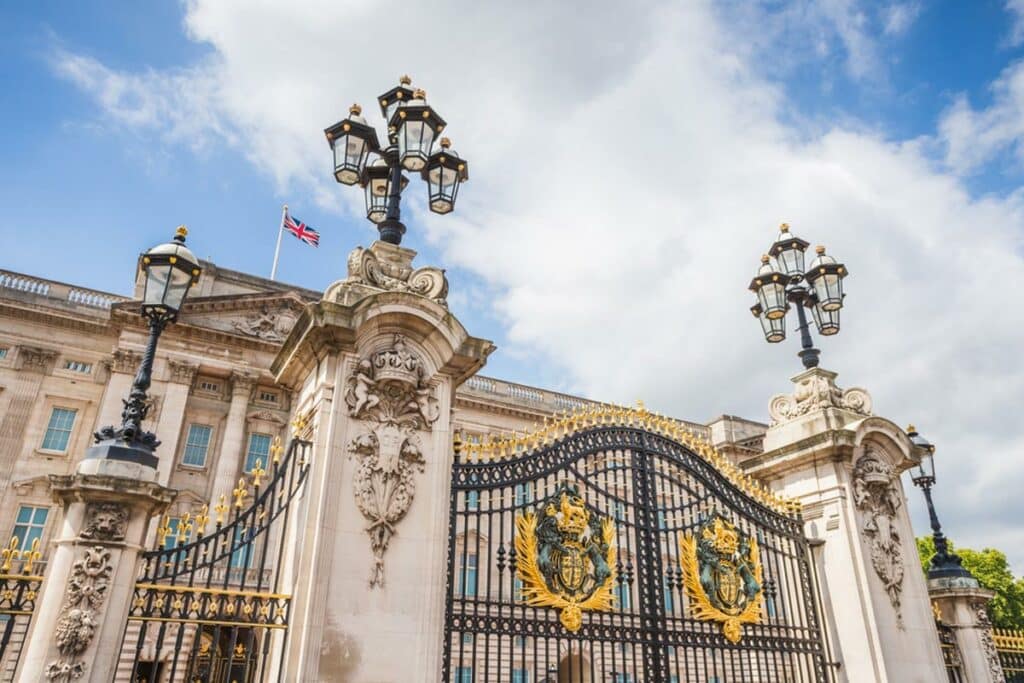
The history of The Palace Gates is tied up in one of the most important periods of British, and indeed, world history: The Industrial Revolution.
A Revolution of the Industrial Kind
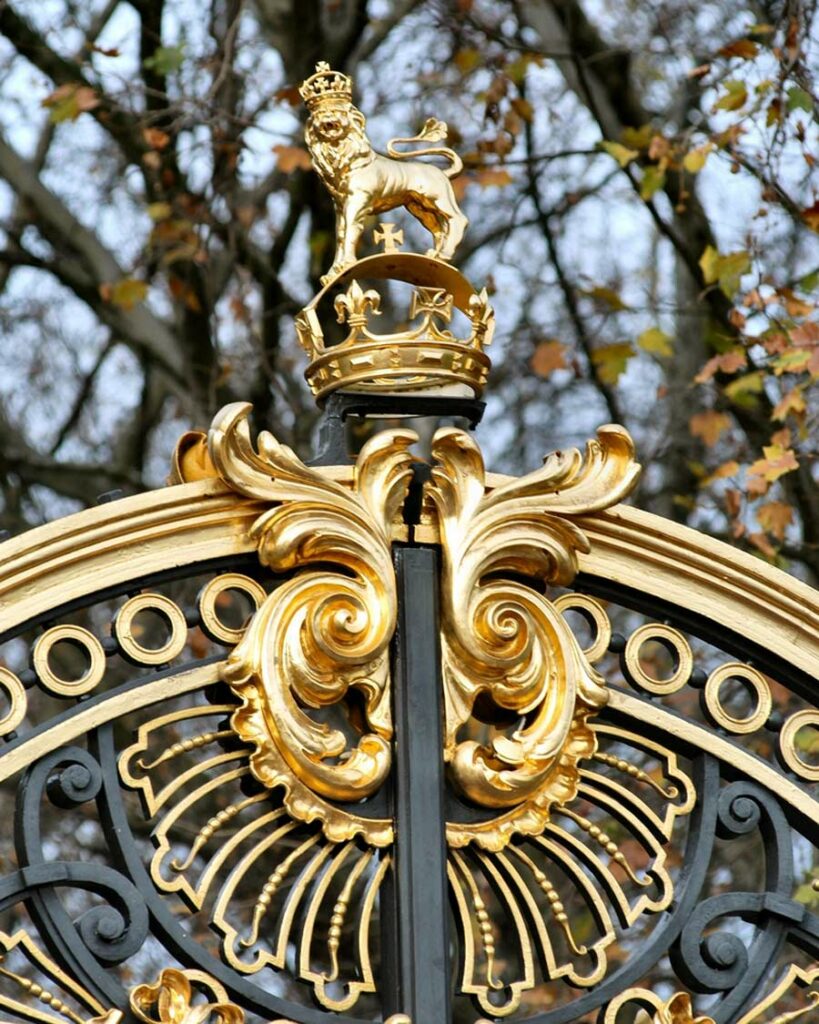
For us, mass production of materials is the norm. We’re used to factories churning out cheap electronics and cutting wood into shape for ubiquitous flatpack furniture. In short – standardising products.
But when this way of manufacturing first came about, there was a fair bit of backlash…
That came primarily from arts and crafts guilds. Workmen who had been trained to make bespoke items to order, the way it always had been done. Their complaint was that with mass production all the skill and art was going out of the work.
It’s tempting to say that they might have been right.
Master Craftsmanship
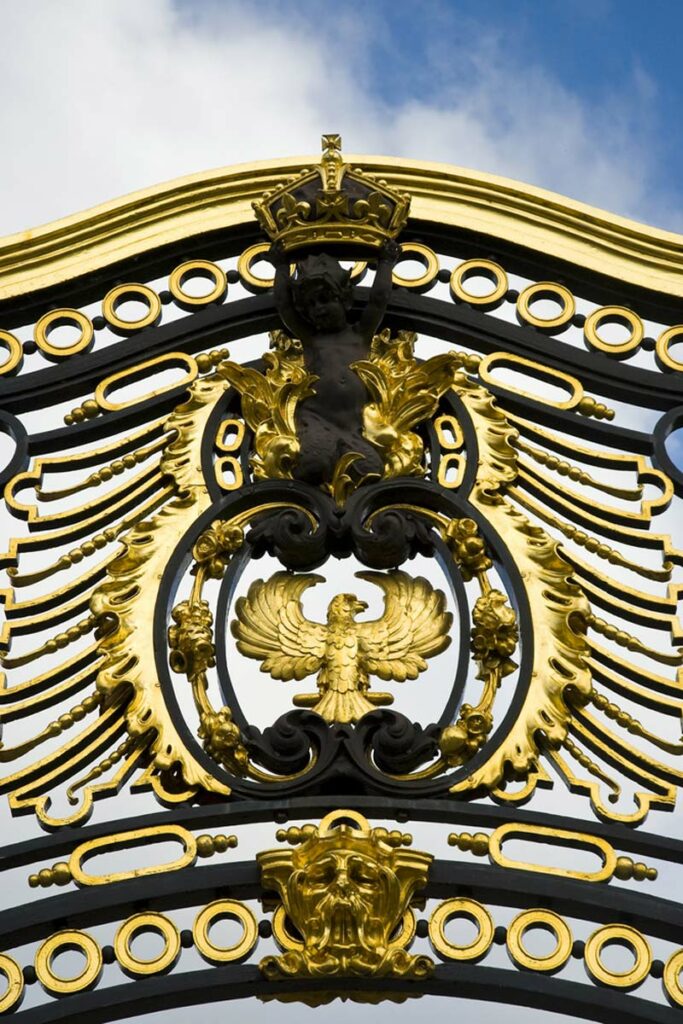
In response to this movement, it was decided that the gates to Buckingham Palace would be made the ‘old fashioned’ way, by craftsmen. The crew chosen for the job was The Bromsgrove Guild.
The Bromsgrove Guild had a reputation for extremely high-quality work and were deep into the Arts and Crafts movement, championing the importance of bespoke design.
The wrought-iron gates they made were commissioned in 1905 and are the same ones that enclose the palace grounds today. They’re a work of master craftsmanship and are laced with all sorts of intricate detail.
What Can you See on The Buckingham Palace Gates
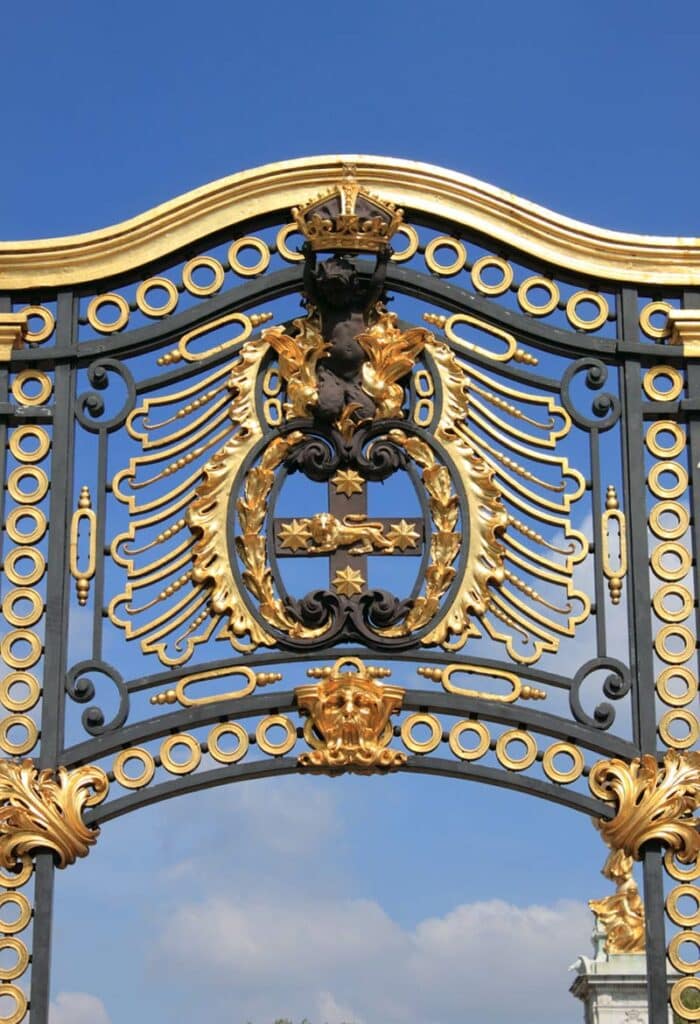
Ok, so get yourself nice and close to the big gates and here’s what you’ll see…
Lions, Palm Leaves and… Unicorns?
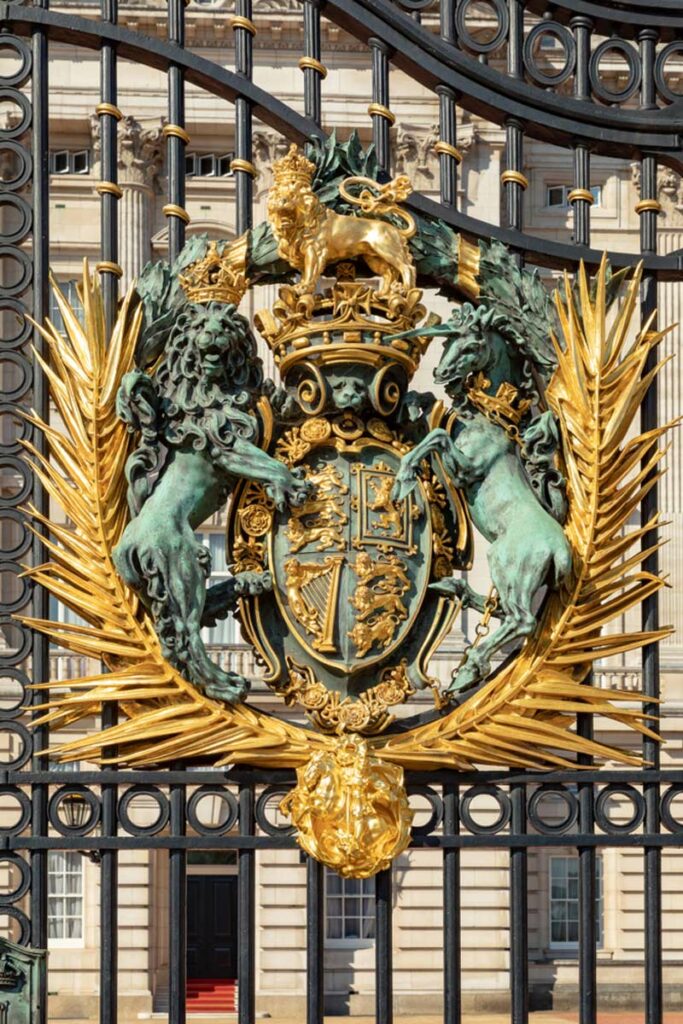
The centrepiece of the main gates are two ornate reproductions of the Royal Coat of Arms. You’ve probably seen it before – it’s on the British passport for one. The symbol is of a lion, representing England, and a unicorn, representing Scotland.
They’re framed by gilded palm leaves and present a shield with further iconography. That iconography depicts two sets of three lions – yes, the three lions from the shirt (that’s an England football reference for non-believers).
There’s also a harp to represent Ireland (you may have seen it on the side of a Guinness glass) and a standing lion to represent Scotland – the whole lion/unicorn thing is a bit confusing and relates back to the 1600s when the English kings assumed rule of the Scottish throne. Once you start to look you’ll see them all over.
Kings and Queens
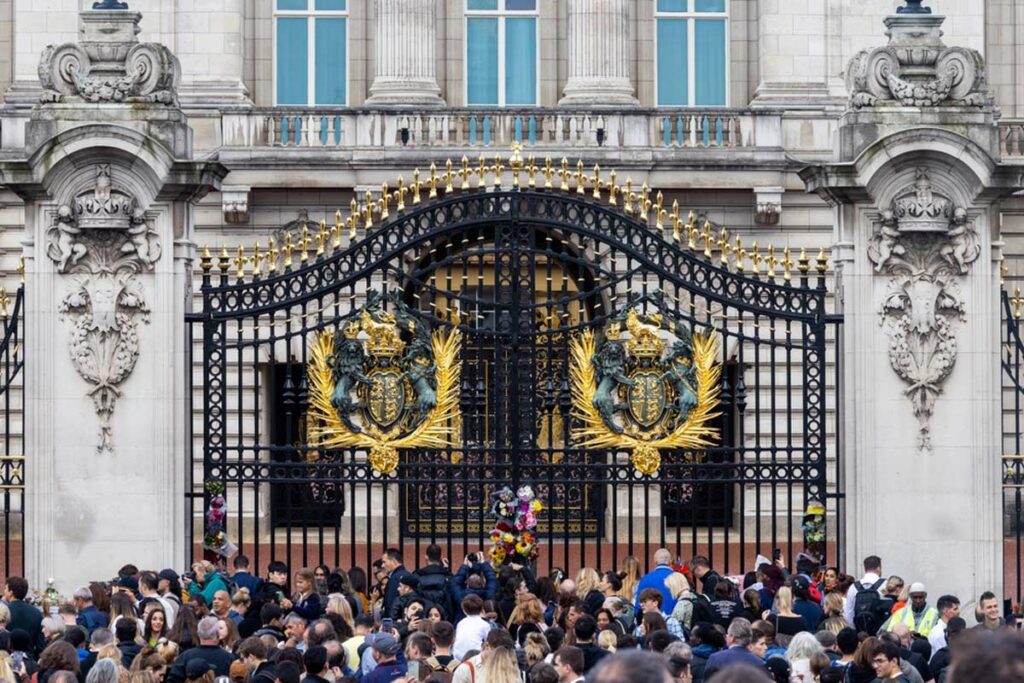
You’ll also find reference to a more recent English king – George V – who was king at the time the gates were constructed. That’s visible in the GRV carved into the stone gateposts’ shield and crown symbols.
His name is also visible in a couple of more discreet places. Primarily on a symbol near the gate’s lock that depicts a G and a V and in a much more subtle depiction of St. George the dragon slayer at the foot of the gates two main lion/unicorn motifs.
George V isn’t the only monarch to be immortalised on the gate. Edward VII also makes an appearance on the stone columns in a cursive carving that’s almost impossible to decipher save the VII you’ll see at the bottom. And if you turn around you’ll also see a giant monument to Queen Victoria.
She also gets a royal treatment on the Canada Gate at Green Park, but that’s a story for another day…
The Buckingham Palace Gates: Practical Information
Address: Buckingham Palace, London SW1A 1AA
Opening Times: You can go take a look at the gates whenever you want, though you might have trouble getting close when there’s a royal event going on.
Tickets: You don’t need a ticket.


